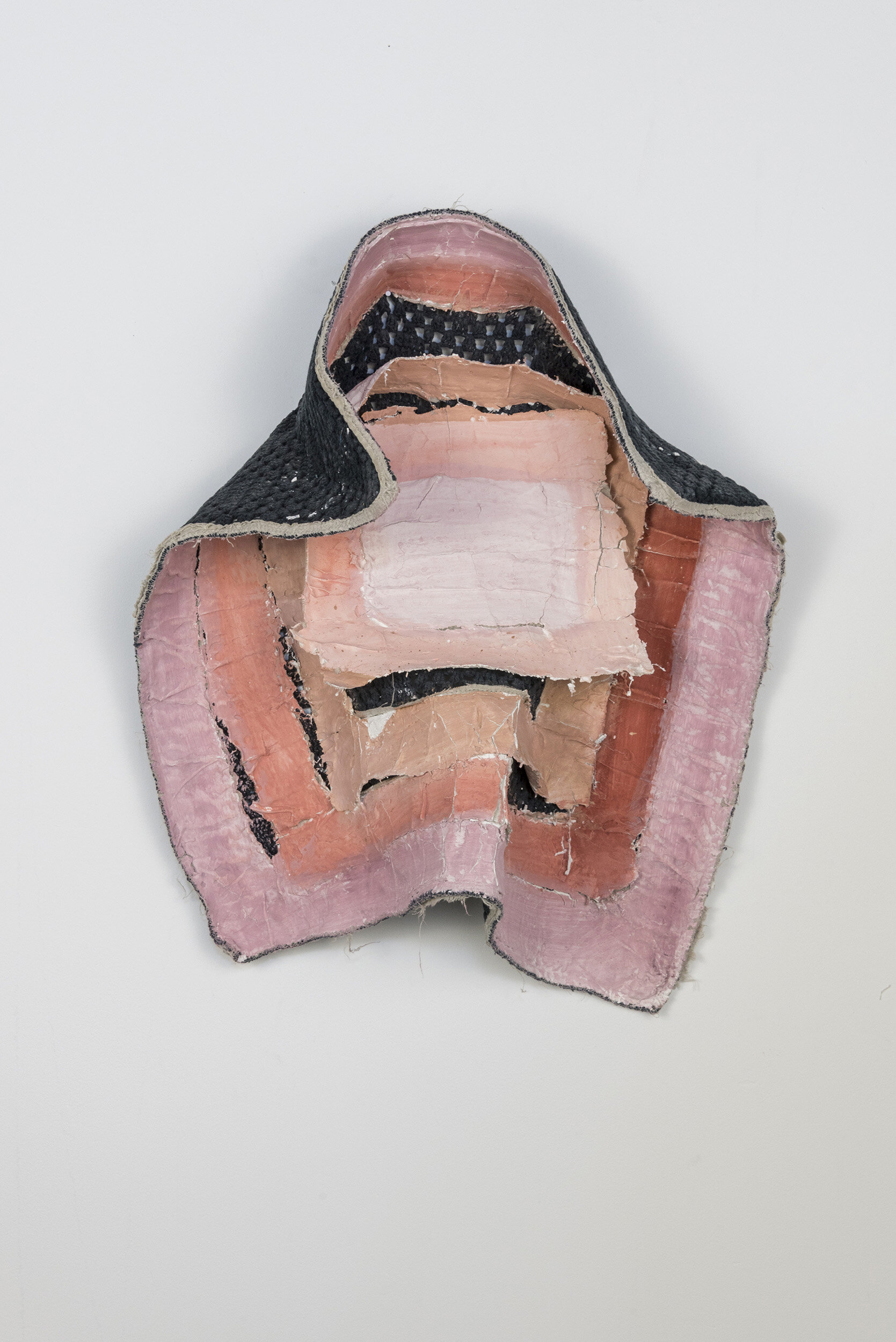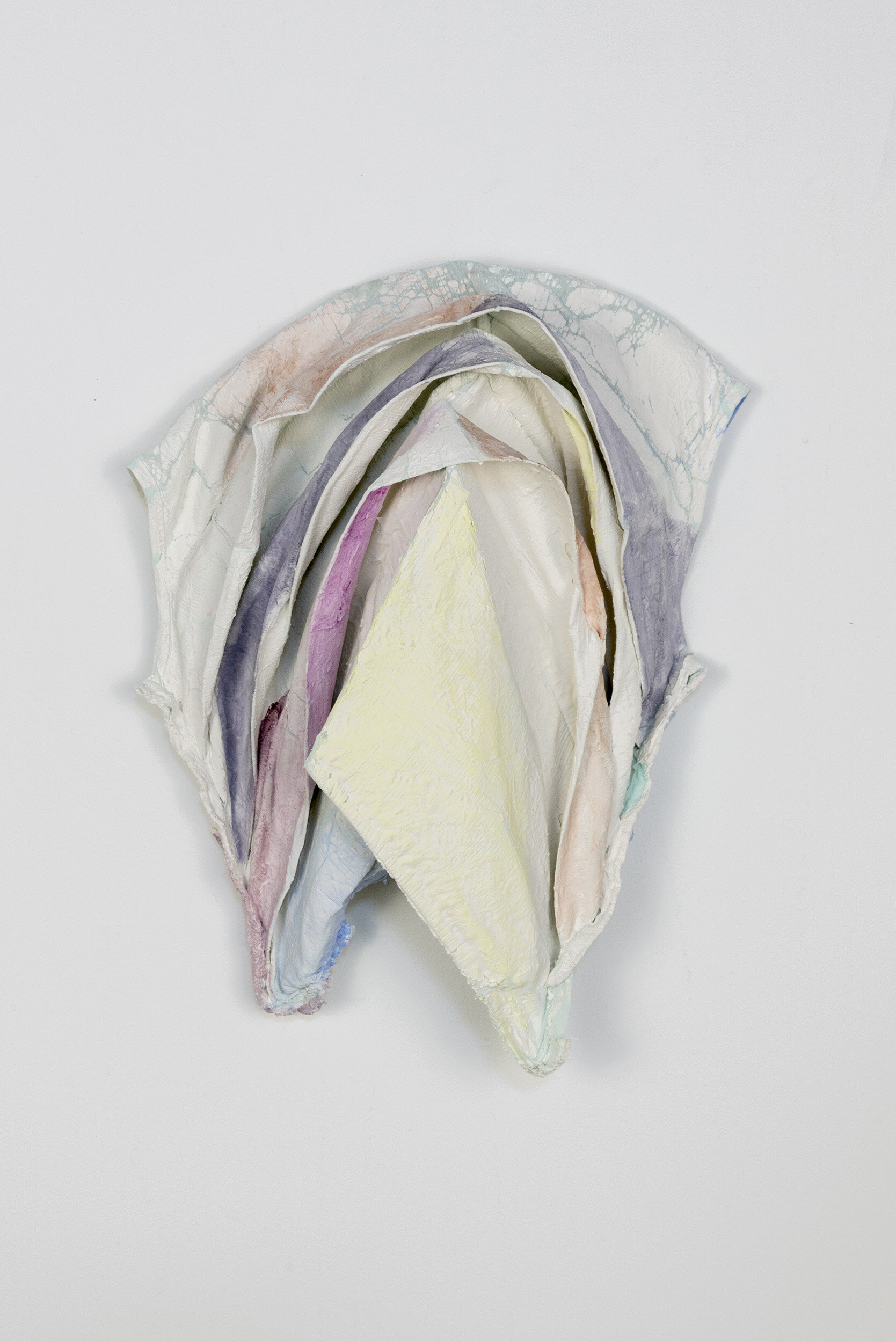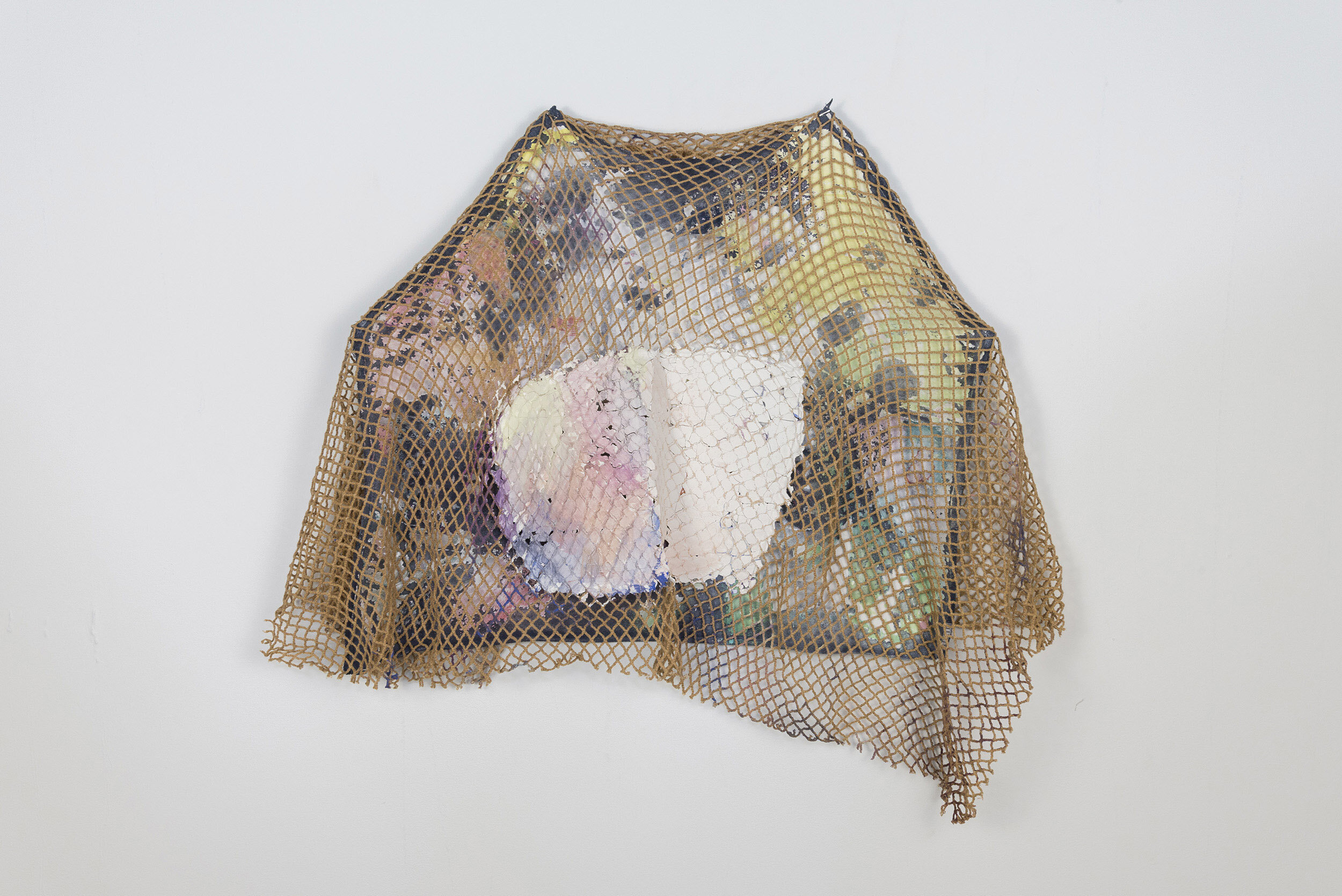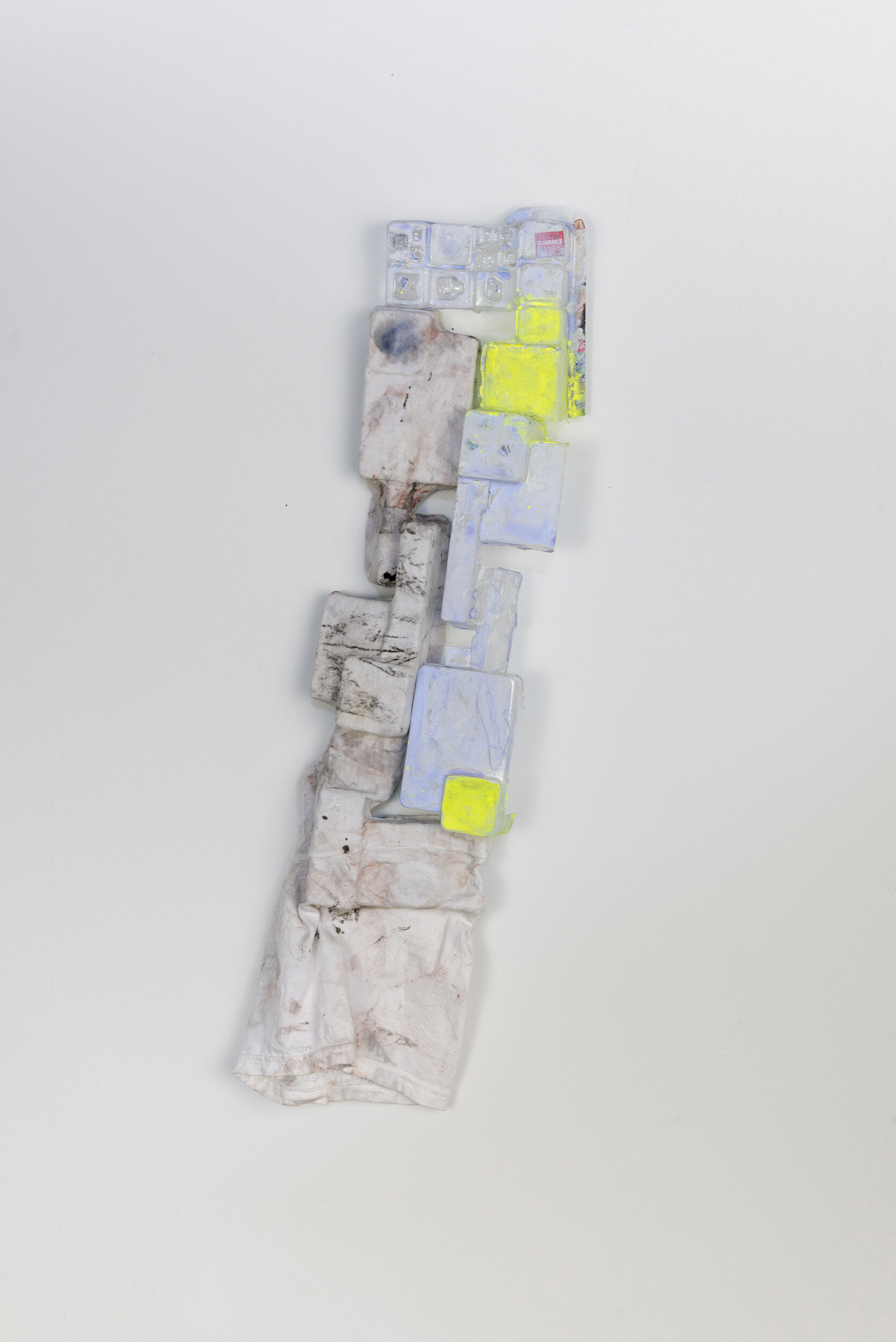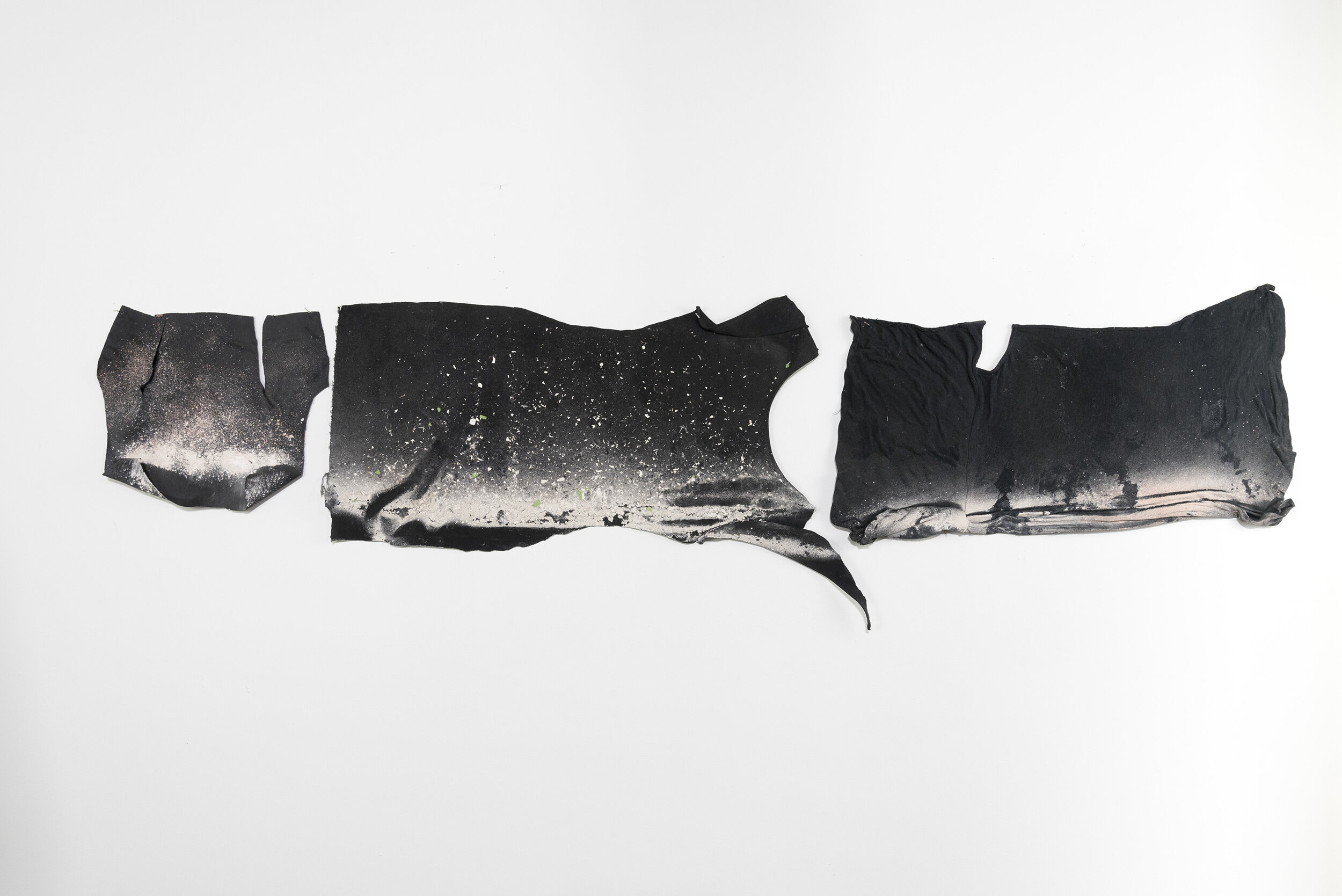The immediate everyday offers up the abstract familiar, shapes whose first purpose has passed. Their ambiguity, both familiar and unfamiliar, sets up questions about what is seen and what is meaningful. Shape becomes presence and void, possibility and loss. The familiar and discarded allow new and multiple possibilities, and metaphors to come into play.
Plastic containers and the cardboard from toy and product packaging, tissue paper from gift-wrapping, as well as clothing and patterned fabric underscore the relationship between the physical body and the body of objects in direct and immediate ways. The inclusion of joint compound, dirt and sweepings from my studio floor fold together evidence of the physical act of making.
These discarded abstractions are akin to the idea of ‘loose parts’ in children’s play, a theory of open-ended learning founded in the seventies by architect Simon Nicholson. Materials like stones, sticks, sand, rope, shells and fabric are used, adapted and manipulated to empower creativity, not limit it. The theory eschews the set directions and static visualizations of so many of today’s plastic toys.
The seemingly ‘useless’ time of play, the ‘lost time’ of production, in the discarded, the ‘deep time’ of single use materials that resist and disrupt return to the earth, are all suggested in the open-ended repetition of shapes and materials. Questions and associations emerge, while meanings lay dormant, silenced or not fully understood.
Installation Video: redux: sara hubbs / will bruder, 2018, Modified Arts, Phoenix, AZ





